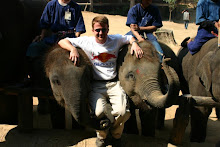I now try and shoot all my pictures using the RAW format, and many cameras both of the SLR type and point-and-shoot variety offer this option. The files are bigger but as the following explanation from www.obsessable.com explains, the RAW format does have more benefits.
JPEGJPEG, an acronym for the Joint Photographic Experts Group who founded the standard, has existed in some form since 1994, when the image file format was formalized. JPEG has grown from a largely disrespected highly compressed format, to a widely accepted standard for image processing. JPEG images (also commonly referred to as JPG) are among the most highly used formats for compression, and are the essential standard for non-transparent photographs and images on the web.
Despite its internet ubiquity, there are specific advantages and disadvantages to using JPEG as a photography file format. For starters, JPEG is the most highly compressed of the three common digital camera formats we're talking about, and as such is susceptible to specific, repeatable image artifacts. Even at the maximum quality setting, JPEG photos will still be compressed, and if a photo is to be used for more than web use and will require complex manipulation, JPEG artifacts can rear their ugly heads. In the image offset right, JPEG quality settings are variably set from left to right, where the image looks best on the left, but eventually degrades to become large blocks of pixels on the right.
That being said, JPEG's varying degrees of quality typically aren't a problem on a digital camera, since the quality is always set to high. As a result, artifacts don't crop up too often, and most photographers taking photos for fun will never notice a difference. And, since JPEG is essentially compatible with almost any computer, its convenience can't be beat. JPEG photos are already web friendly, and photos can be conveniently emailed or moved around the net with minimal hassle. For casual photographers looking to save time when transferring photos, JPEG is probably your file format of choice.
RAWThe newest kid on the block is more than just an image format; RAW is an entirely new approach to image capture. Rather than simply capture the data from the image sensor, then write it to memory as a file format, RAW files instead save all the metadata associated with an image, and bundle it with the raw data (hence the name) from the sensor. This novel approach to images provides some drastic advantages after a photo is taken. Rather than work with values like red, green and blue, and guessed values like saturation, image editing software (Adobe's Photoshop, for instance) can edit the raw data from the camera pixel by pixel, allowing for incredible adjustments with no loss of image quality.
Some refer to the RAW image format as a digital negative. In traditional film photography, negatives aren't usable as images on their own, but instead need to have light projected on to photographic paper to create a usable image. Likewise, RAW images have all the data necessary to create a usable image, but inherantly aren't an image unto themselves. RAW images, like traditional negatives, can contain more color information than can be reproduced in a traditional image, allowing for additional potential effects, or extreme detail.
Who's going to benefit most from RAW? Pro photographers, who are already used to adjusting the manual settings for their camera, will notice the greatest benefit from the images. In fact, most consumer cameras can't yet shoot RAW format, leaving higher end prosumer DSLR cameras from the likes of Sony, Nikon and Canon to perfect the format before lowly point-and-shoots get the privilege. However, like all technology, expect a trickle down effect. RAW is the first step in a new type of photography, where instead of having to set a lens to perfection and make sure an image is in focus, a user could theoretically snap a shot, and fix the focus, contrast and lighting conditions later on their computer.

